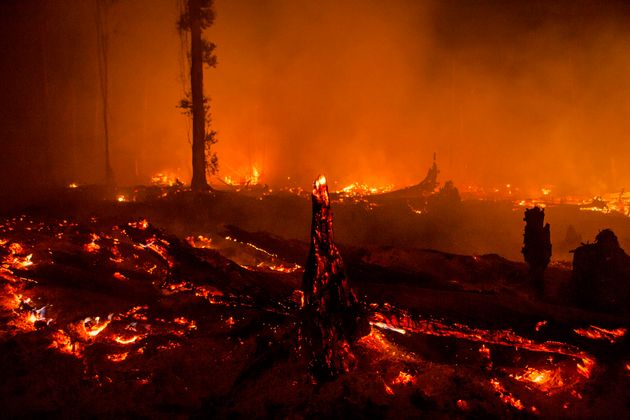The El Niño of 1997-98 was the worst on record. It caused an estimated 23,000 deaths worldwide as widespread drought, flooding and other natural disasters rocked the globe.
The catastrophic weather system also caused the most devastating coral bleaching in recorded history, killing off about 16 percent of the world’s reef systems. In the U.S., the total economic impact of that year’s El Niño was between $10 billion and $25 billion.
Sounds bad? Well, according to NASA, we may now be facing an equally-destructive El Niño; one that's poised to only worsen in the first few months of 2016.
The weather system -- which has already wreaked havoc globally, contributing to the East Coast’s balmy Christmas, deadly storms in the South and the worst floods in South America in 50 years -- “shows no signs of waning,” NASA wrote on Dec. 29.
The agency added that the latest satellite image of this year's super El Niño “bears a striking resemblance to one from December 1997.”
“The images show nearly identical, unusually high sea surface heights along the equator in the central and eastern Pacific: the signature of a big and powerful El Niño. Higher-than-normal sea surface heights are an indication that a thick layer of warm water is present,” it wrote.
 NASA/JPL-CALTECH
NASA/JPL-CALTECH
With the very worst of the droughts, flooding and other extreme weather events expected to come in the coming months, humanitarian organizations have expressed concern about the mounting needs of the world's most vulnerable.
Aid organization Oxfam International said that the effects of this year's El Niño are “set to put the world’s humanitarian system under an unprecedented level of strain in 2016.”
“The El Niño weather system could leave tens of millions of people facing hunger, water shortages and disease next year if early action isn't taken to prepare vulnerable people from its effects,” the organization said in a Dec. 30 press release.
In Ethiopia, for example, an estimated 10.2 million people will need humanitarian assistance in 2016, Oxfam said; while in Malawi, about 2.8 million people may require assistance before March.
In the U.S., the worst El Niño impacts can be expected in the early part of this year, said NASA.
For parts of the West Coast, however, this may be a boon more than bane. Matt Sitkowski, a weather producer at The Weather Channel, told NBC News that“wetter and stormier” conditions could be expected in drought-stricken California for the next two or three months.
“The East Coast could easily be affected, too. The 1997-1998 El Niño caused a crippling ice storm in New England and southeastern Canada,” NBC wrote.
According to NASA, “El Niños are triggered when winds in the Pacific weaken or reverse direction, resulting in a warming of the ocean in the central and eastern Pacific, mainly along the Equator. Clouds and storms follow the warm water, altering jet stream paths and storm paths around the world.”
Though El Niño isn't directly caused by climate change, scientists say global warming ups the intensity of the weather event.
http://www.huffingtonpost.com/entry/nasa-el-nino_568a065de4b014efe0dad0c5








I believe that this El Nino will be far worse than the 1997-8 one.
ReplyDelete